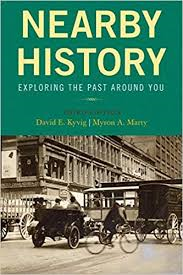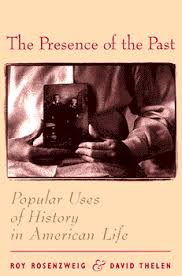I first encountered oral history in my master’s program in history at California State University, Fullerton. I chose the program because it had strong public history training, but in my research about the school I discovered the pedagogy included something called “oral history.” I scratched my head at that, but added that information to a laundry list of graduate school problems labeled: “I guess I’ll figure it out when I get there.” After all, I wanted training to be a museum curator – and nothing else.
Things didn’t go according to plan.

My introduction to oral history was immediate. In my first public history course, a fateful assignment meant I needed to lead a small group discussion about oral history as historical evidence and as practice. My sense of oral history at the time was pretty limited to oral tradition: elders informally sharing knowledge about the past. My group consisted of undergraduates and graduate students who also had little to no experience with oral history, so we set out to discuss: what is oral history and what is its value to public historians?
We debated the reliability of oral history, given its dependence on memory and subjective experiences. We talked about how differing approaches to transcription shade researchers’ experience with oral history source material. We also questioned whether oral history had a place in public history writ large, or if it should be a separate discipline. And yet, we all agreed that it was important to record people’s life experiences, that their stories are inherently valuable.

I began the assignment deeply skeptical of oral history, but at some point during this discussion I found myself defending the practice because of the value of these alternate stories. In part, public history springs from an activist tradition hoping to recover pasts not about white male leaders, but of the everyday and everyman. With that framework in mind, I ended up posing the question: is oral history the most egalitarian practice in public history?
My argument was that much of the time museum exhibits are the result of so-called experts communicating history to the public; it’s an expensive and laborious process that doesn’t always involve the people who witnessed the history presented in the exhibit. But oral history, it’s different. At its core, oral history involves two people sitting down to chat using potentially inexpensive equipment to record their conversation. This process takes place outside the Ivory Tower and requires talking – and really listening – to people in your community, people whose lives and expertise have often been under acknowledged or completely overlooked. In theory, oral history can invert the power structure of just who is the expert. Unlike the rest of the historical profession, oral historians don’t just study the past, they help shape documents about the past by interacting with the people who lived it.
It was during this initial assignment about oral history that I began to question where oral history fits with other historical evidence. I eventually concluded that oral history is different from other text-based sources because it comes with a set of complications about collecting the information. And yet, oral history is also different because sharing human experiences through oral tradition is a powerful tool in making sweeping historical narratives personal and relatable – this connection to the past is difficult to achieve through census records.

It was through these discussions and further exposure to the value of first-person interviews that I finally resolved my questions about how oral history relates to public history. And oral history has become an important mainstay in my toolkit in my career as a public historian.